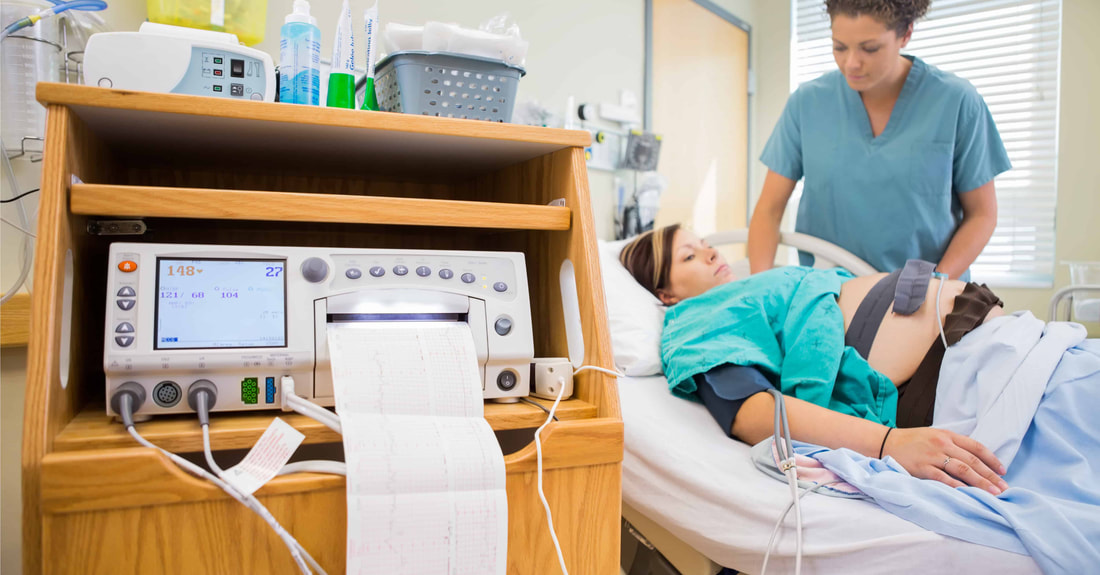|
We all know that massage feels great! But do you know about all the benefits it adds to your prenatal and postpartum experience? The lovely Jenny Jarrett, Birth Doula and Registered Massage Therapist helped us out with her top reasons why you should explore massage during and after your pregnancy.
The Top 5 Benefits to Prenatal Massage 1. Stress Relief: Growing a human can be a worrisome business as well as physically taxing on the body. Prenatal massage with a well trained therapist can help ease anxieties and promote relaxation. 2. Decrease Muscle Aches: A pregnant body undergoes so many changes that the muscles are constantly trying to support strength and movement in the skeleton as these changes happen over time. Massage helps relieve the tension in muscles so it can better support the body. 3. Decrease Edema: Fluid levels significantly increase during pregnancy, and sometimes can result in edema (an excess of fluid build-up). Massage helps to recirculate this fluid and increase comfort in the pregnant person. 4. Reduce Joint Pain: Sleeping positions, weight bearing, and relaxin influenced joints can lead to joint pain. Particularly in the hips, low back and neck. Massage promotes circulation to these areas, relieves muscle tensions that pull on the joints and can reduce joint pain. 5. Improve Sleep: Thanks to all of the above mentioned benefits, a pregnant person can often have improved sleep following massage. Less stress, decreased muscle and joint pain, and decreased discomfort from swelling all lead to a better night’s rest. Top 5 Benefits to Postpartum Massage 1. Decrease Muscle Tension: Being a new parent is hard work emotionally and physically. Massage can help decrease the muscle tension from stress, prolonged postures (i.e.: feeding baby), and physical strains from labour/delivery. 2. Increase Pelvic Floor Health: Believe it or not, one doesn’t necessarily need to cross their legs when they sneeze after they have vaginally delivered a baby. A massage therapist skilled in pelvic floor health can help decrease tension, promote circulation, and decrease scar tissue or fascial restrictions from birth (vaginal or C-section). This can lead to improvements with continence and sexual function. 3. Reduce Stress: Self Care is so important for a new parent. It is invaluable to carve out a bit of time for oneself to care for the body. Massage can be an important piece in restoring wellness to a parent. 4. Injury Rehabilitation: Unfortunately, sometimes pregnancy and labour can cause injury to a person. Injury can also occur in the postpartum period for many reasons including repetitive strains/stress. Massage can help cue the body to reset, and begin to heal. 5. Decrease Swelling: That excess fluid doesn’t always go away quickly following delivery of baby. This is particularly the case if one has received IV fluids during labour and delivery or the immediate postpartum period. A massage helps to circulate that excess fluid so that it leaves the body quicker and leaves the person much more comfortable. You can find Jenny at: Balance Massage & Doula www.jennyjarrett.com  Induction of labour is big topic, not really a quick blog post topic, but let's try and cover the basics. Induction has been becoming more common place, as a Doula, I see this all the time. And it's on the rise. Obstetricians often offer an induction beginning at 39 weeks. This is because some studies have shown that the cesarean rates are somewhat decreased if induced at 39 weeks.
It is super important to remember that there are hard and soft indicators for induction. Soft indicators: *your 39 weeks *your over your estimated due date *well controlled gestational diabetes *suspected big baby *for your providers convenience *done being pregnant Hard indicators: *uncontrolled gestational diabetes *intrauterine growth restriction *preeclampsia *your 42 weeks + (this is when stillbirth becomes statistically significant) There are always some exceptions to both hard and soft indications, this is just a quick list. 75% of people will give birth by 41 weeks and 2 days after the last menstrual period. You may find yourself under pressure by a provider to get labour started. If there are no hard indicators that waiting for baby is a problem, remember, you have a choice. You can decline an induction. You can ask for some work up to ensure baby is happy. Inductions have risks, often those risks far outweigh the risk of waiting for labour to begin on it's own. Know your options and understand the difference between relative risk vs. absolute risk (your actual risk rather than a population level risk). Don't be afraid to advocate for yourself. Your due date is not an expiration date in a low risk pregnancy! |
Archives
June 2023
|

